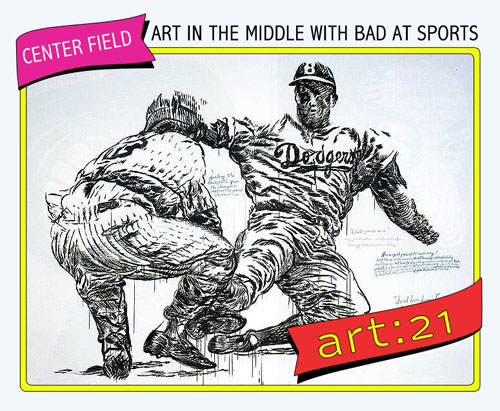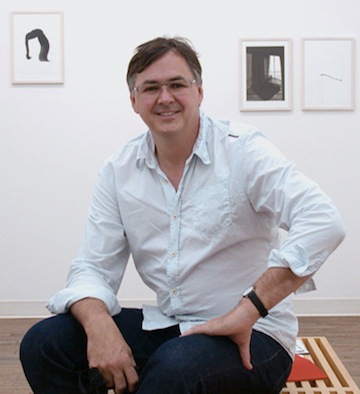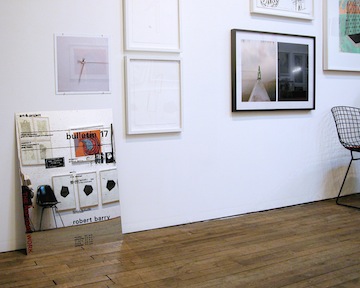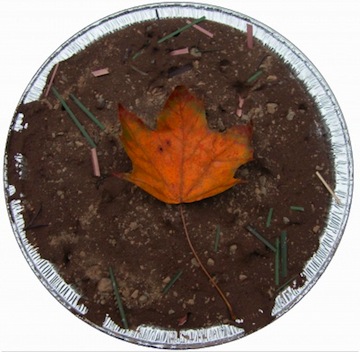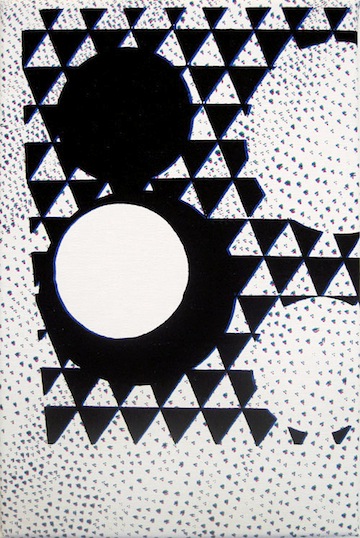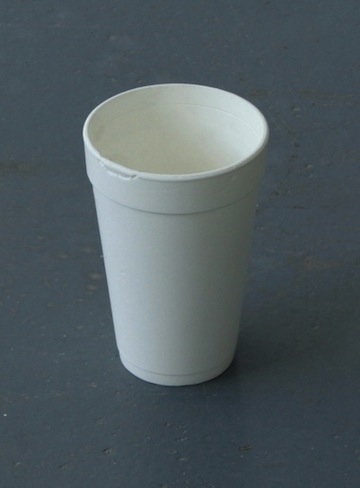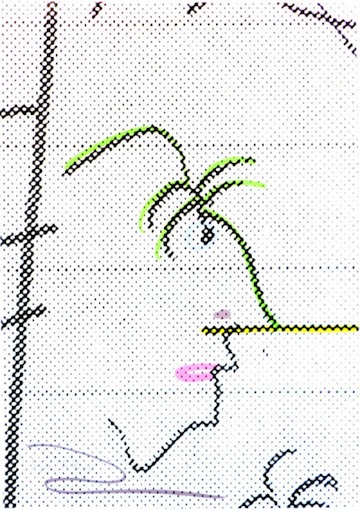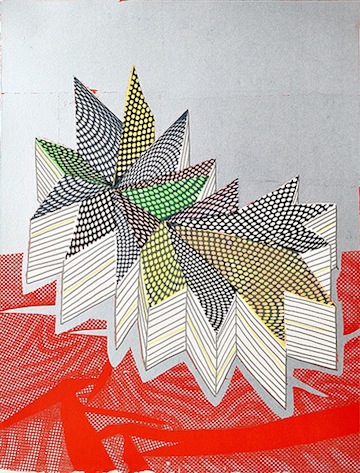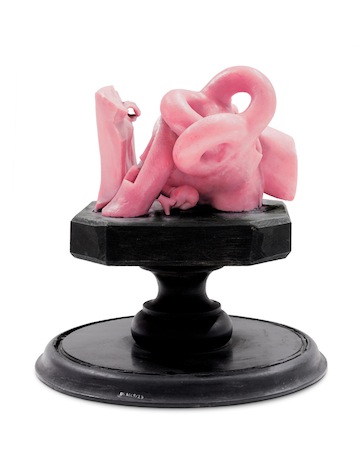Dan Devening is an artist, educator (he’s on the faculty of the Paintings and Drawings Department of The School of the Art Institute of Chicago), and the creative force behind one of my favorite Chicago galleries, devening projects + editions. At the end of this month, devening projects will open a new exhibition titled Multiplemix that features new editioned work by artists such as Candida Höfer, Liam Gillick, Sarah Morris, and Sigmar Polke. I’ve always wanted to learn more about the thinking that goes into a set of artist’s multiples, so I took this opportunity to pick Dan’s brain a bit about how editions are made and why the making of multiples can be an exciting area for artists–as well as art collectors–to pursue.
Claudine Ise: What led to your interest in collecting, exhibiting, and publishing artists’ multiples?
Dan Devening: My interest in editions and multiples probably grew out of a few particular experiences. Foremost is my undergraduate focus in printmaking at the University of Nebraska. I was drawn to the printmakers because they seemed to operate in this cool zone between a kind of macho, working-class culture and this incredibly anal technical virtuosity. Plus, they seemed to have the most fun — working late into the night, printing complicated multi-color lithos and etchings… and getting a little high on all those chemicals that we learned later would probably take years off our lives. The printmaking area was led by Thomas Majeski and Gary Day, two artists who realized that the medium would change dramatically as technology advanced (this was the late 70s, by the way) and as a result, continually brought in non-printmakers as visiting artists to force us to work the potential of the medium. As students, we would assist or print for these artists, many of whom forced us to solve all kinds of crazy technical problems that may or may not be possible on the press. We aimed to please and were driven by this intense need to prove our worth by handing over an exquisitely printed edition at the end of their visit. Because most of these artists were not printmakers limited by some preconceived technical standard, they approached the process in a very innovative way that forced us to continually search for solutions.
About ten years ago, I started traveling regularly to Germany, Austria, and the Netherlands. I have artist friends there who introduced me to a contemporary art culture that wasn’t found only in the larger cities, but also seemed to be very important part of just about every small town. Little collectives of interested community members would form “Kunstvereins,” open a small exhibition space and start showing contemporary art. These Kunstvereins could be large museum-like spaces or small rooms within other community cultural projects. In almost every case, these spaces show cutting-edge contemporary projects and they inevitably feature editions of exhibiting artists, which were produced to commemorate the exhibition and would be sold in the museum bookstore. I quickly became amazed at how affordable and unusual these multiples were. They were almost never a traditional print; instead you would see unique photo-works, objects, digital media, video, and just about any other medium that could possibly produce a multiple. As long as the work was in multiple form, it worked for this purpose and in most cases was under about $500, depending on the artist. I was immediately struck by this notion of highly accessible work by well-established and emerging artists. I started going to museum stores to seek out the editions in their collections…and I started collecting them at the same time.
In 2002, I met a very ambitious young Dutch curator named Robert Meijer who started an edition project called En/Of (Dutch for “and/or”) that paired visual artists with experimental sound artists. The end result of each edition was a double-sleeve album with a 12” vinyl record featuring the sound work on one side and the visual artwork on the other. Remarkably, he was able to convince Olafur Eliasson, Doug Aitken, Martin Boyce, Tobias Rehberger, Jonathan Monk, Thomas Demand, Monica Bonvicini, Simon Starling, Sarah Morris, Liam Gillick and many other very important contemporary artists to participate. For a collector to have access to an artwork by any of these artists for $125 was amazing and I quickly became a subscriber to the project. I was also invited as an artist to produce one of these editions with a Chicago improv band called Tiny Hairs as my musical partner. Robert Meijer now has a gallery in Berlin called Luettgenmeijer; he still produces the En/Of series but they aren’t coming out as often as his collectors would like.
As my interest in editions grew more serious, I saw my pleasure working as a curator as a good foundation for what I wanted to do next, which was publishing editions. In 2006, I initiated my first serious edition project as a themed, curated suite called Wherever. I invited about 17 artists to create an edition in any reproducible medium in a run of 30 that would include 3 artist’s proofs (one would be for handling and showing, one was archived and the last would be available in the event that someone wanted to acquire the entire collection). The artists included Laura Letinsky, Judy Ledgerwood, Tony Tasset, William J. O’Brien, Mark Booth, Ken Fandell, Carol Jackson, Markus Linnenbrink, Julia Hechtman, New Catalog, Pamela Bannos, and others.
Soon after that project, I was offered the chance to lease a space across the hall from my current studio; that room later became the gallery that I called devening projects + editions. The publishing was still about collaborating with artists and challenging them to come up with ways to solve a problem: how to make a work that was not a traditional print, that could express something about their work but also operate in this other world of editions. The results were always fantastic. For example, Tony Tasset made Mud Pie for Wherever. Mud Pie was a brown plaster mud pie in an aluminum pie pan (it looked exactly like a real mud pie) with an autumn leaf on top that was made from a sheet of very thin, cut brass and exquisitely painted with oil pigments. In this case, Tony didn’t produce 30 Mud Pies but made the edition available on request.
Today, after four years as Director of devening projects + editions, I probably put a greater focus on the nuts and bolts of running a commercial gallery project but still make it a point to try to get each artist featured in a solo exhibition to produce an edition. For example, Jered Sprecher just made Now & Not Yet, a 5-color silkscreen print on primed and stretched linen. The piece is relatively small—12” x 8”—but I love how Jered, who is a painter, produced a edition that was so closely tied to his discipline. There were also beautiful editions produced by both Richard Rezac and Gary Stephan for their exhibitions, Kabinett 1 + 2. Richard used a new inkjet printing process to produce vinyl wallpaper from a recent drawing and Gary Stephan made a small suite of works on paper that were produced by carefully folding and spray-painting each sheet with acrylic enamel. Both of these editions came about as a result of the artists working in a way they had not before; I am particularly joyful when that happens.
CI: How does your work with artists’ multiples feed into the side of your gallery that’s geared toward the exhibition of discrete objects?
DD: I guess I see the editions I’m publishing as becoming a sort of beautiful archive of the artists that have passed through the gallery over the years and which reflect something of what my curatorial vision is all about. I also work hard to bring attention to this side of the gallery project and recognize that there is much more that could be do to market the editions to become a more visible and special enterprise. Selling more of them is also a highly desirable goal for both the gallery and the artists, but unlike the culture surrounding editions in Europe, there are still some challenges to getting collectors to recognize how editions might fit comfortably into their acquisition strategy if they’re not already a focus. Maybe there are stigmas attached to work that is editioned; maybe those who might be interested are surprised that the prices are maybe more than expected. I see the edition publishing part of my project as a long-term (love) affair to produce, show, and promote really special objects by some very interesting artists.
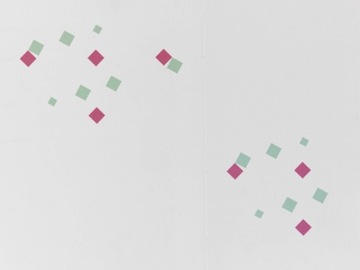
Richard Rezac, "Untitled," 2010 (detail). Digital print on vinyl, comprised of 3 rolls, 84 × 68 inches overall.
CI: Can you take us through the process – both the creative and production sides—of creating an edition/multiple?
DD: In most cases, when I propose the publication of an edition with an artist, I’ll show them a bunch of examples of recent work and use those examples to open a door to what’s possible within the project. Mostly, I’m hoping that they’ll take up the challenge and approach the process as an experience that can expose their practice to something new. Because there is the necessity that the work be an edition, the requirement that there be multiple copies of the work sets up a nice set of parameters. The artist may have some ideas about how they might proceed and if that’s the case, we’ll start talking about production methods or options. The great thing about doing editions with artists is that they’re artists; they’re trained to be creative problem solvers, so I’ve never been disappointed with the editions that have come out of these conversations. For example, a recent piece from Nathaniel Robinson called Dreg is a resin-cast styrofoam cup. It’s a one-to-one replica of the real thing—including teeth marks near the rim—that also includes a set of greasy fingerprints on the inside of the cup. I don’t know how Nathaniel made this edition of three and I don’t think I ever want to know. The mystery of this modest little object is its beauty. My only fear with Dreg is that someone will mistakenly throw it in the trash.
In almost every case, there are regular conversations between me and the artist when an edition is in process. Usually the artist handles the production and when proofs or trials are available, we’ll usually meet to discuss the results and the next steps. If adjustments need to be made, we’ll often make those decisions together. This isn’t always the case; just as often, an artist will simply deliver the final work. Ultimately the artist makes all the final decisions; I’m only there to offer support and encouragement.
CI: You spoke earlier of the possible “stigmas” that are attached to work that is editioned. I think that’s partly based on the notion that multiples are not as powerful as an artist’s other, “original” work.
DD: I can certainly see this as an argument but for me, editions are simply one of many creative avenues available to an artist. Multiples have their own culture, traditions, audience, and possibilities for innovation. I think that for those artists interested in that potential, they’ll use it as an avenue to make something new and interesting; maybe even build it as a viable part of their practice. I think Jasper Johns is a really good example of a contemporary artist who throughout his career has fully embraced printmaking as an extension of his oeuvre. He’s been working with the printers and publishers like ULAE for decades and it’s obvious from the way he approaches this work that the medium is offering a material quality that can’t be achieved within other mediums. For example, the effects generated from etching or lithography can only come from the transfer process of ink to paper through a press.
I think for many well-established artists, the decision to make editions may have obvious financial considerations. To offer more studio work to a wider audience just makes sense and many artists will take that opportunity if it’s offered. I would also say that in most cases, the work produced by these artists is of such a high caliber that it does absolutely nothing to diminish their output. There are other artists who work in modes that might be considered edition-related—’zine publishers, poster printers, sound artists—that use the medium to build larger audiences, demographics that aren’t limited to gallery/museum contexts. This work is often very affordable, usually produced inexpensively using all kinds of ingenious production methods, but still has the weight and resonance of so-called “serious” work. I have a strong interest in just about any kind of work that can have wider distribution as a result of editioning. One good example is The Thing, a quarterly subscription edition project, I think out of San Francisco. One can subscribe to a year-long series of four editions for just $200 and get a wonderful surprise in the mail every few months. The series features both recognized artists like Trisha Donnelly, Chris Johanson, Allora & Calzadilla, and Ryan Gander as well as emerging artists like Trevor Paglen and Starlee Kine.
CI: Thanks so much for talking with me, Dan!
Multiplemix opens at devening projects + editions on January 30, 2011. Please note: this is an excerpt from a longer interview. The full transcript will be posted on www.badatsports.com on Wednesday, January 23rd.

